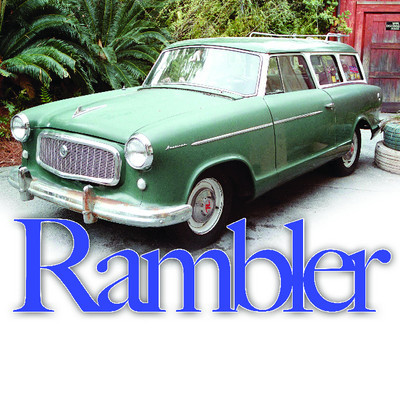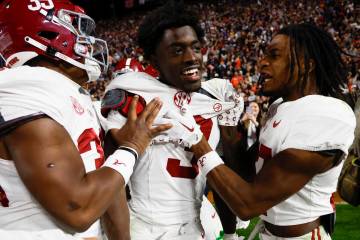Economical Rambler saved AMC
People who think the automobiles of 1950s were all overstuffed, chrome-laden, gas-drinking behemoths need to recalibrate their memory synapses.
Sure, there were plenty of cars like that around, and they were indeed popular. But one company, Nash-Kelvinator, later to become American Motors Corp., successfully bucked this trend.
The company's cars came with frameless unitized body construction, safety features that were ahead of their time (such as seat belts), unique reclining seats you could sleep in and engines that championed fuel economy over horsepower and straight-line acceleration.
The bare-bones Rambler American was a perfect case in point. Although not the smallest or thriftiest Nash/AMC product (the Austin-engined Metropolitan earned that distinction), it came in a variety of compact coupe, sedan, convertible and wagon body styles. Still, six passengers could squeeze onto its bench seats. And with 82-90 horsepower (depending on the year) on tap from its inline six-cylinder engine, the company promised the car would deliver 30 miles per gallon (more with the optional overdrive), a figure well above almost any other car on the road.
The original Rambler dated back to 1950 when its bathtub shape joined the Nash lineup that included the larger, better-equipped and similarly styled Airflyte, Statesman and Ambassador models. Initially, only two versions were produced: a two-door "landau convertible," where only the roof folded out of sight leaving the side window frames in place; and a two-door station wagon. Later Ramblers would also be available as a pillarless two-door hardtop with an optional externally mounted "continental" spare tire.
The last of the first-generation 100-inch wheelbase Ramblers was produced in 1955, a year after Nash-Kelvinator and Hudson merged to become American Motors. In 1956, the Rambler nameplate was attached to a larger (108-inch-wheelbase) full-size car.
But AMC president George Romney, a staunch supporter of the small-car concept, thought the company had drifted away from its core principles, resulting in faltering economic fortunes. It was Romney who publicly called the cars made by GM, Ford and Chrysler "gas-guzzling dinosaurs," and issued a tongue-in-cheek challenge to Henry Ford II to a game of "chicken" by driving head-on into each other in their respective products. This, he felt, would demonstrate the inherent strength and safety of his company's use of unitized construction. Ford's response to this offer is not known.
Part way into the 1958 model year, the original Rambler returned from its three-year hiatus to once again provide no-frills economical transportation. Then called the American, the $1,775 base two-door business sedan (the better-equipped Super cost $100 extra) offered only a few options, including Flash-O-Matic automatic transmission, AM radio and a heater.
The American was nearly identical to the 1950-'55 Rambler, with the exception of a new grille and full cut-out wheel openings that made the car look less tublike than the original.
Bringing back the Rambler turned out to be a stroke of genius for Romney and AMC. In 1958, a brief, but painful, recession affected the North American economy and automobile sales dropped. The only exception was American Motors, whose cheaper, economy-oriented products were suddenly in demand from cautious new-car buyers.
By year-end, AMC had returned to profitability, earning a modest $24 million for its shareholders. Although the overall auto industry was resuscitated the following year, Romney's company continued its winning ways, led by the lowly Rambler American, which then featured a two-door wagon in addition to a two-door sedan. By the end of the 1950s, more than 90,000 Americans had been sold, triple the previous year's output. AMC's 1959 profit also expanded to an impressive $60 million.
The Rambler American continued unchanged for one more year before being replaced with a completely new (and boxier) design in 1961. But by then the little car with its downright homely, brightwork-absent sheetmetal and featureless interior had already done its job and done it well. It helped rescue an entire company and put AMC back on track as a competitive and innovative force.
And George Romney, who eventually became a three-term governor of Michigan and a 1968 Republican presidential candidate, was hailed as one of the most brilliant and innovative corporate leaders of the 20th century.
You won't find too many around today (after all, this 1959 example is part of a Universal Studios Jurassic Park exhibit in Florida), but the next time you come across some giant-finned glitz-mobile from the "Father-Knows-Best" or "Leave-It-To-Beaver" era, think about the humble Rambler American and its ultimate impact on the kind of cars we drive today.
Malcolm Gunn is a feature writer with Wheelbase Communications. He can be reached on the Web at www.wheelbase.ws/mailbag.html. Wheelbase supplies automotive news and features to newspapers and Web sites across North America.
















